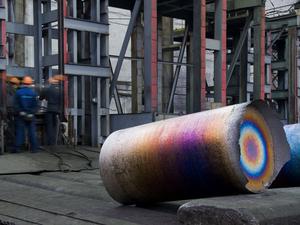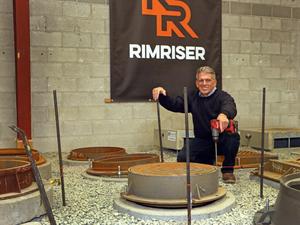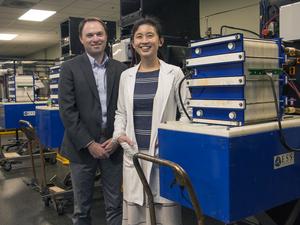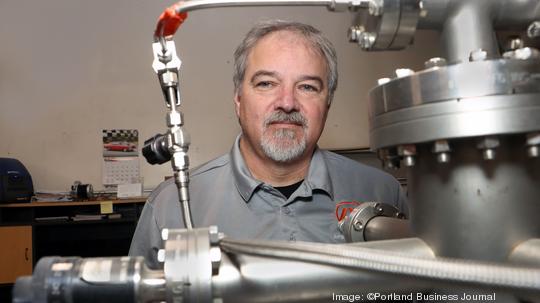
“Starting a business is not for the faint of heart,” Paul King said. “It is really quite hard.”
It didn’t help that King set out to shake up the staid world of vacuum arc remelting.
Niche, technical and involving highly specialized manufacturing, it came with a classic “valley of death,” the entrepreneurial chasm between concept and revenue-generating product. Coffee bean sourcing and roasting it wasn’t.
Yet more than seven years after King stepped away from the National Energy Technology Laboratory in Albany to start Ampere Scientific — he was less than three years from the comforting embrace of full government retirement when he made the move — the company’s prospects appear good.
“I firmly believe in the product,” said Andrew Elliott, vice president of technology at Consarc Corp., a New Jersey company with global reach that has partnered with Ampere Scientific. “I think it’s going to be a game-changer. I think we’re on the edge of this really taking off.”
Ampere’s main product is called VARmetric. It provides a virtual view into vacuum arc remelting furnaces, where specialty metals such as titanium and nickel alloys are refined for use in aerospace, power generation, medical implements and other fields.
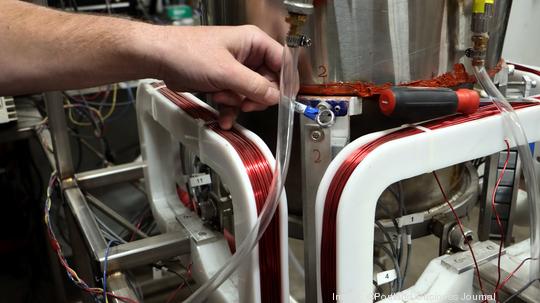
Previously, the big steel chambers had been something of a black box, leaving operators imperfect control over the high-current arc that melts the metals. The payoff with insight is safer operation, larger ingots, fewer defects and reduced power use.
King licensed the technology from the national lab, where the culture, he said, is “I’ll get a promotion if I have a patent or a paper, but by gosh, I’m not going to be the one that’s going to try to make this into a product.”
Ampere Scientific, in Albany as well, began as KW Associates, which remains its formal name. At the start, a stint with the Oregon State University Advantage Accelerator, a development deal with nearby ATI Specialty Alloys and Components, and $150,000 from Oregon BEST (VertueLab) provided footing. But there were trying times. The presumed CTO decided “not to leave his cushy government job,” King said. Money was sparse. It was a two-person operation for a period, and they had that valley to travel.
“We had to take something that we literally affixed to one of these furnaces with bungee cords and industrially harden it,” King said. “Our technology had a fair way to come from what was at the national lab to what is now being sent out as a commercial product.”
Elliott, at Consarc, said the concept “sounded like a bit of a science experiment” when he first encountered it in 2014. “I thought, that’s great on a lab scale, but it wasn’t industrially ready, but it was worth keeping an eye on. Now here we are, seven or eight years later, and it is ready for industry.”
The company has been aided by nearly $2.4 million in government-related grants, mostly through the federal Small Business Innovation Research program. That’s made up about half Ampere Scientific’s funding, King said, with another 30% coming from sales and the remainder split between equity investments and economic development support not associated with grants.
King highlighted a couple of key, difficult decisions along the way that will likely resonate with other startup warriors, particularly in manufacturing.
One was to build a machine shop, rather than continue to farm out components.
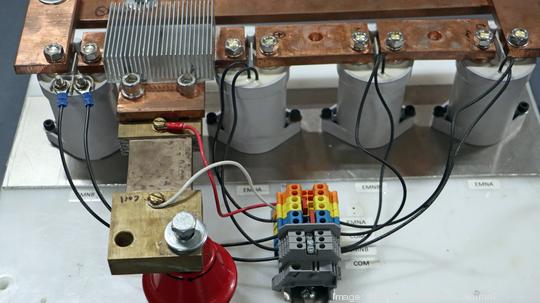
“Every entrepreneur that’s building something comes to the point where they have to say: ‘I don't have very much money, so do I take the risk now and invest in the company?’” King said. “If you don’t, you can spend four or five or six times the amount of money, but it’s a gamble.”
Another decision was to work toward ISO 9001, an international quality management certification, beginning in 2020. It can open doors to clients and customers, but meant the company had to freeze product development.
That same year, Covid-19 battered aerospace manufacturing, a vital sector for specialty metals, “and the whole industry went silent,” King said.
But 2021 brought the deal with Consarc, a furnace maker that wants to include Ampere Scientific technology with the units its sells. Then came a deal with Aubert & Duval, a France-based high-performance metals company, which will use Ampere Scientific hardware in furnaces. That gets the company into the difficult-to-penetrate European market while also providing R&D opportunities.
“They’ve made the partnerships in the industry and managed to get the grants needed to put these first systems on and gather the data that’s needed to prove, already, from a safety perspective, this is a no-brainer,” Elliott said. “For titanium and other reactive medals, it can detect conditions that ... can result in an explosion. For other materials, it’s more of an economic play in improving the yield, making a higher quality product and being more electrically efficient.”
King said that if all goes as expected, revenue could leap from about $1.6 million in 2021 to as much as $6.4 million this year.
“There have been times where things looked really bleak,” King said. “We’re not a software company that can go from zero to billions in a few years. But I think we’re on course. And now we’re talking about becoming a software company.”
The idea there is to take advantage of the reams of data that Ampere Scientific systems capture. It will require another entrepreneurial leap.
“The hard part is figuring how you monetize it, or how you show the return on investment for somebody buying that data,” King said. “I need to go out and find somebody that can help me really understand how you move from a hardware company to a data company.”
AMPERE SCIENTIFIC
What it does: Makes arc positioning sensing and control hardware and software for use in vacuum arc remelting furnaces
Location: Albany
Founder and executive director: Paul King
Employees: 12
TIMELINE
2005-2009: Core IP developed at the National Energy Technology Lab in Albany
2014: Founded and begins in the OSU Advantage Accelerator
2015: Exclusive license for IP from NETL
2015: $150,000 Oregon BEST (VertueLab) grant
2018: $704,000 SBIR grant, the company’s largest of several such grants
March 2021: Consarc partnership
October 2021: Aubert & Duval sales agreement
